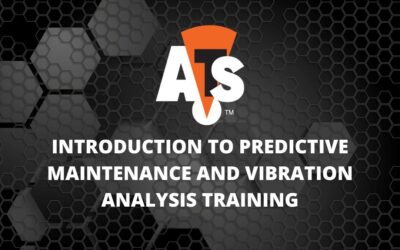We SHOULD all agree that condition monitoring and evaluation is more change analysis than anything else. This discussion will use vibration-based condition monitoring as an example, but the arguments apply equally to nearly all condition-monitoring technologies.
Condition monitoring and evaluation for operational reliability improvement started to become popular in the late 1980s and used the best available technologies at the time. So-called “personal computers” were also moving from the hobbyist realm to professional use in office environments as they were significantly less expensive and easier to adapt than the pay-per-play mainframes we were previously using. This changeover of computing technology really opened up the possibilities for industrial condition monitoring and evaluation, and arguably, vibration was the first widely used technology.
The early influencers in our industry studied machinery and came up with various rules of thumb for vibration amplitudes as guidelines for what indicated a machine in good condition versus one in bad condition. These thresholds were typically fixed values and became widely adopted. Various sources published guidelines that became adopted by standards committees and regulatory agencies. Many were adopted by manufacturers as warranty limits – in other words, end-users were advised to keep operational vibration below a certain amplitude or risk voiding their warranty. Insurance providers similarly jumped on the vibration monitoring bandwagon, imposing methods and thresholds for insurability. Essentially, a line was drawn where vibration above some arbitrary value was considered bad and at least investigation, if not corrective action, was required. But the unfortunate corollary to that was that if a measurement fell below the threshold, then everything was considered to be good, even if it wasn’t! Back in those early condition monitoring and evaluation days, it was a real challenge to convince a maintenance or production manager that a machine needed to be taken out of service for repair work when the overall vibration amplitude fell below that “threshold of concern” even though the spectrum or waveform showed that any number of bad things were happening inside the machine.
By the middle of the 1990s, and again thanks somewhat to the proliferation and increasing sophistication of what could be done with desktop PCs, some condition monitoring systems started incorporating change-based and statistically-based alert thresholds for the data, focusing our attention on things that are changing more than just blind adherence to a set of vibration severity charts. Because as we addressed in a previous article (see As Condition Monitoring people, We Fear Change!), change in condition monitoring data is almost never good. You can’t just say that because some value is below an arbitrary threshold that everything is good.
We need to be focused on what is normal for a particular, individual machine when it is performing a specific function or operating within a specific set of production parameters. The previous article described the difference in how a car sounds from one driving scenario to another, with both being normal – even though they are quite different – for what the car was doing at the time. The same thing goes for industrial machinery. Consider a single paper machine that alternates between making two different products; kitchen paper towels and bathroom tissue. Normal vibration for that machine is relative to which product is being run at the time and is quite different between the two products. Even the security guard at the building’s entrance, who knows almost nothing about the process, can tell by the sound and vibration in the walls which product is being made.
Thus, comparing data collected when making bathroom tissue with data collected when making paper towels would result in all sorts of wrong conclusions especially since no single threshold could reasonably be expected to apply to both!
This is why ATS focuses first on understanding the machines themselves and how they operate. Our skilled personnel, with organic machine condition evaluation domain expertise, can tell what is normal or not in the data for each operating state for our Customer’s machinery. This applies equally to data collected using portable or permanently installed instrumentation. Because we know and understand what a machine is doing when data is collected we are uniquely able to differentiate between what is normal and what is not and therefore make recommendations that focus you toward machines that truly need some level of attention and guide you to taking the appropriate corrective action at the best opportunity to maximize your productivity and revenue stream.
We’ll present some specific example case histories in future articles related to the dangers of complacency over fixed amplitude thresholds and trying to do proper change analysis across differing machine operating states.
For more information on why ATS is a unique multi-technology condition monitoring and evaluation service provider, founded on machine domain expertise, please contact us at 866.398.9778 or info@ats-inc.org to discuss how we can help you improve your operational reliability through condition monitoring.






0 Comments